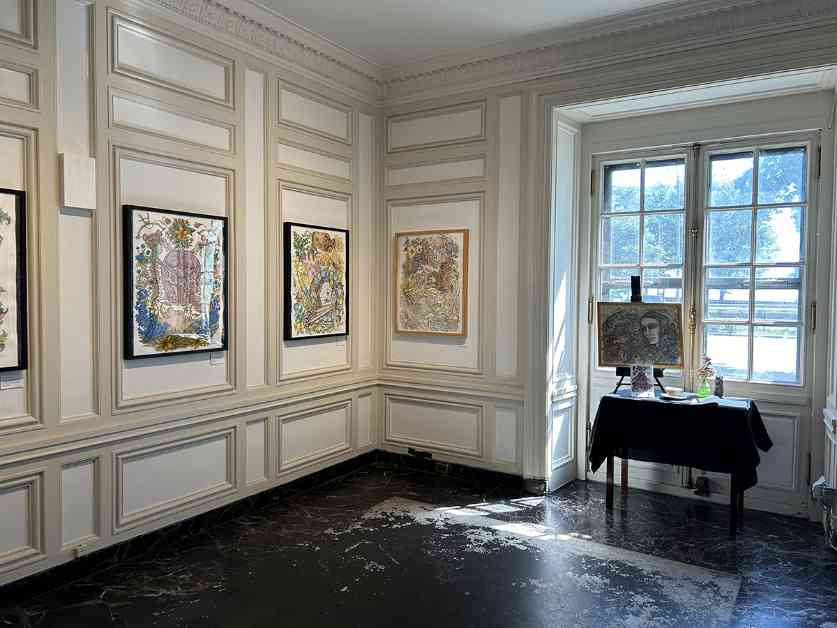In Cheri Lee Charlton’s solo exhibition, “Unseen and Underserved,” she pairs each piece with quotes about women’s reproductive, physical, and mental health from literature and medical publications. This sheds light on the misdiagnoses that occurred in the late 20th century, leading to devastating outcomes for women. Elliot Valenstein’s book, “Great and Desperate Cures,” highlights how lobotomies were used as a standard treatment for psychiatric conditions in the 1950s, often targeting women who were considered too outspoken or rebellious.
Charlton’s artwork, like “Silenced Minds and Voices (2024),” is intricate and colorful, reminiscent of vintage fairy-tales. However, beneath the vibrant colors lies a dark reality of patriarchal misdiagnoses. Women who did not conform to societal expectations were subjected to lobotomies, which forcibly reduced their psychological activities by isolating parts of the brain. The illustrations show women being restrained, silenced, and even carved open, reflecting the lack of agency and voice these women had in their medical treatment.
The exhibition portrays a grim picture of how women’s health and bodies were controlled by patriarchal norms. If a man labeled a woman as crazy, his word held as much power as a judge’s sentence. Women’s reproductive rights were also infringed upon, with others claiming ownership of their wombs. The illustrations depict the struggles of women who were unheard and underserved, trapped in a system that did not value their autonomy or well-being.
As you walk through the exhibition, you can’t help but wonder if these women ever tried to protest or assert their own sanity. Were their pleas for help ignored and dismissed? The artwork serves as a poignant reminder of the dark history of medical neglect and mistreatment that many women faced in the past.
“Unseen and Underserved” is on display at the International Museum of Surgical Science until November 3rd. Charlton will also be giving an artist talk on October 22nd. The exhibition invites viewers to reflect on the importance of listening to women’s voices and advocating for their rights in healthcare.
In a time where conversations around women’s health and autonomy are gaining momentum, Charlton’s exhibition serves as a powerful reminder of the need to acknowledge and rectify past injustices. It prompts us to listen to the stories of those who were unseen and underserved, ensuring that history does not repeat itself in the medical field.


